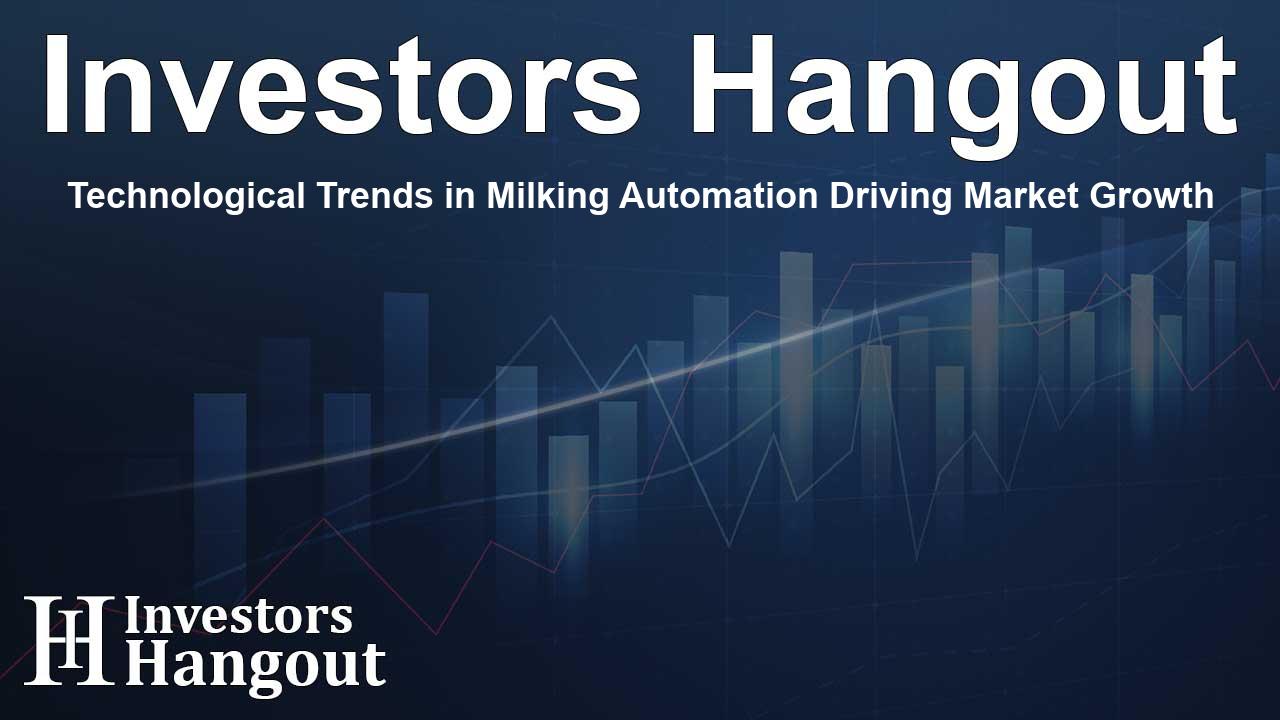Technological Trends in Milking Automation Driving Market Growth

The Growing Milking Automation Market
The global milking automation market is experiencing remarkable growth, with projections indicating an increase from approximately USD 1.1 billion to an impressive USD 2.2 billion over the next ten years. This growth represents a compound annual growth rate (CAGR) of 7.2%, showcasing a significant shift towards the adoption of technology within the dairy industry.
Factors Fueling Market Growth
As dairy farmers encounter rising demands and challenges, the transition to automated milking systems has gained momentum. These advanced solutions are being embraced not only to boost efficiency but also to improve milk quality and streamline operational processes. Let’s delve into the key factors driving the milking automation market forward.
Technological Innovations
Innovation is at the heart of the milking automation trend. Today’s milking systems utilize cutting-edge robotics, sensors, and comprehensive data analytics, which significantly enhance the reliability and accuracy of the milking process. These automated systems are designed to lower labor costs while maintaining consistent milk quality.
Rising Demand for Dairy Products
Another significant factor is the increasing global demand for dairy products. To effectively meet production standards and consumer expectations, dairy producers are investing more in automation technologies. This transition not only facilitates higher production levels but also aligns with sustainable farming practices.
Mitigating Labor Shortages
The dairy industry has been grappling with ongoing labor shortages, worsened by a decline in skilled workers. Automation addresses this issue by reducing dependence on manual labor and providing a more consistent and reliable milking process.
Enhancing Animal Welfare
While efficiency is crucial, the welfare of dairy cows remains a top priority. Automated milking systems are designed to create a less stressful environment for milking, which in turn improves animal comfort and welfare.
Commitment to Sustainability
Furthermore, sustainability has become an essential consideration in food production. Milking automation contributes to minimizing waste and optimizing resource use, thereby promoting environmentally responsible farming practices.
Regional Insights into the Market
The growth of the milking automation market varies across different regions. Each area demonstrates unique growth rates influenced by local market conditions and consumer preferences. Here’s a closer look at the CAGR of milking automation in selected countries:
- **South Korea:** 9.70%
- **United Kingdom:** 8.10%
- **China:** 8.00%
- **Japan:** 7.70%
- **United States:** 7.50%
Key Players in the Milking Automation Sector
Numerous companies are competing for dominance in this rapidly growing market. Noteworthy players include DeLaval, GEA Group, and Nedap N.V., whose innovations and strategic approaches significantly influence industry standards and customer expectations.
Challenges Ahead
Despite the optimistic outlook for milking automation, the industry faces several challenges. High initial investment costs pose a considerable hurdle for small to medium-sized farms looking to implement these advanced systems. Additionally, the technical complexities involved in operating and maintaining automated systems can be daunting for traditional farmers who are not accustomed to such technologies.
Maintenance and Repair Needs
To ensure the optimal performance of milking automation equipment, regular maintenance and timely repairs are essential. Downtime can not only disrupt production but also lead to financial difficulties for farmers.
Data Management and Security Concerns
Modern automated systems generate vast amounts of data, which necessitates effective management and security measures to protect sensitive farm operations from cyber threats. It is crucial to have adequate strategies in place to maintain data integrity.
Looking Forward
The milking automation market is set for significant transformation in the coming decade. As farmers increasingly adopt technology, the landscape of dairy farming will continue to evolve, with a focus on efficiency, quality, and sustainability. With numerous advancements on the horizon, the industry is poised to redefine its operational frameworks.
Frequently Asked Questions
What is the projected growth of the milking automation market?
The milking automation market is expected to grow from USD 1.1 billion to USD 2.2 billion by 2034, reflecting a CAGR of 7.2%.
What are the main drivers of this market growth?
Key drivers include labor shortages, increased demand for dairy products, technological advancements, and a focus on sustainability.
How does milking automation affect animal welfare?
Automated milking systems provide a less stressful experience for cows, improving their overall welfare during the milking process.
What challenges does the milking automation sector face?
Challenges include high initial investments, technical complexity, maintenance needs, and ensuring data security.
Who are the major players in the milking automation market?
Major players include DeLaval, GEA Group, and Nedap N.V., among others, who contribute to market innovation and development.
About The Author
Contact Riley Hayes privately here. Or send an email with ATTN: Riley Hayes as the subject to contact@investorshangout.com.
About Investors Hangout
Investors Hangout is a leading online stock forum for financial discussion and learning, offering a wide range of free tools and resources. It draws in traders of all levels, who exchange market knowledge, investigate trading tactics, and keep an eye on industry developments in real time. Featuring financial articles, stock message boards, quotes, charts, company profiles, and live news updates. Through cooperative learning and a wealth of informational resources, it helps users from novices creating their first portfolios to experts honing their techniques. Join Investors Hangout today: https://investorshangout.com/
The content of this article is based on factual, publicly available information and does not represent legal, financial, or investment advice. Investors Hangout does not offer financial advice, and the author is not a licensed financial advisor. Consult a qualified advisor before making any financial or investment decisions based on this article. This article should not be considered advice to purchase, sell, or hold any securities or other investments. If any of the material provided here is inaccurate, please contact us for corrections.
